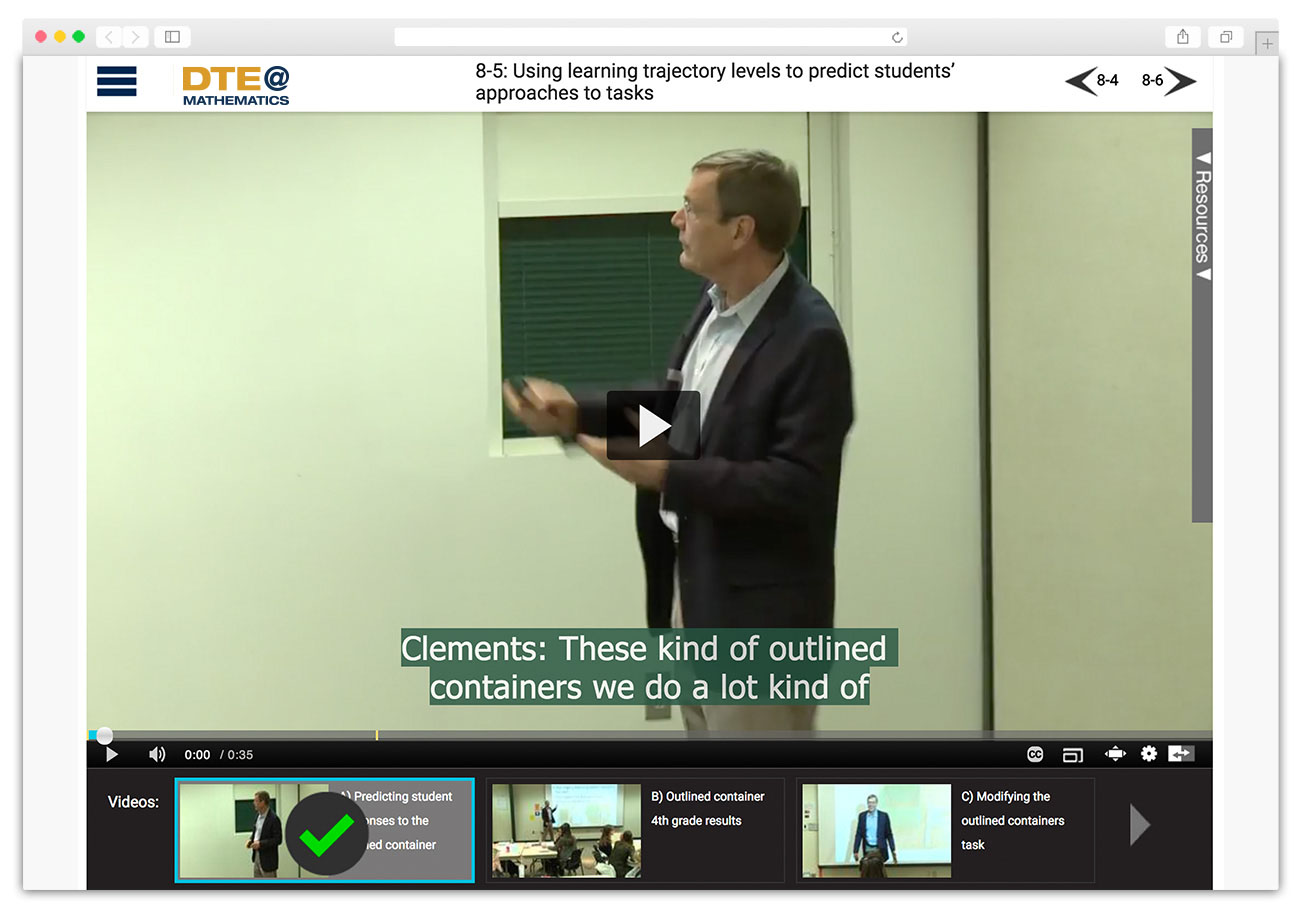Geometric-measurement - Session 8: Volume Learning Trajectory – Developmental progression
Part 5: Using learning trajectory levels to predict students’ approaches to tasks
Overview
This part provides an opportunity to apply what was learned in the previous parts by (1) predicting how students at certain levels of the Learning Trajectory would respond to volume measurement tasks, and (2) considering how to modify the tasks to make them accessible to students at different levels.
Key Points
- The ways in which volume tasks are represented has a huge influence on how students respond. For instance, using 3-D rather than 2-D representations can support students in using an understanding of volume as layers to solve the task.
- Experiences with concrete volume tasks (involving packing or building with cubes, as well as reasoning about partially packed containers or partially built structures) help build students’ conceptual understanding of volume. Students can then begin to apply this understanding to more abstract tasks.
